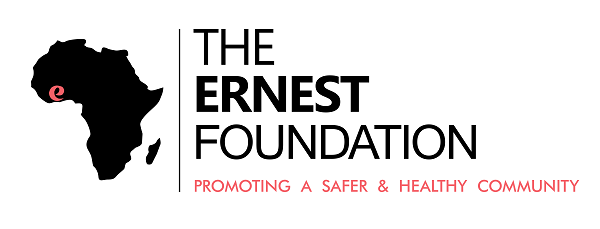The number of new tuberculosis (TB) cases continued to decline in 2017, and fewer people died from the disease, according to the World Health Organization’s (WHO’s) 2018 Global TB Report. But efforts to make the world’s deadliest infectious disease a “disease of the past” need to be ramped up, agency officials said today.
While an estimated 54 million deaths have been averted since 2000, the burden of TB remains high in many low- and middle-income countries, and WHO officials said ending TB as a major global health problem by 2030 will require countries to pick up the pace.
“Actions in some countries and regions show that progress can accelerate, but overall we’re still off track,” Teresa Kasaeva, MD, PhD, director of the WHO’s Global TB Programme, said at a news conference held at the United Nations (UN) headquarters in New York.
The 2018 edition of the WHO’s annual TB report estimates that 10 million people developed the disease in 2017, including 5.8 million men, 3.2 million women, and 1 million children. That’s down from 10.4 million in 2016. Globally, the TB incidence rate is falling by roughly 2% a year, with annual reductions of 5% and 4% in Europe and Africa, respectively.
But the report says the global incidence rate needs to be falling by 4-5% every year to meet the first milestone of the End TB strategy—a 20% reduction by 2020 (compared with 2015). The strategy aims to cut TB incidence by 80% by 2030.
Similarly, the number of estimated TB deaths dropped from 1.7 million in 2016 to 1.6 million in 2017. Of those deaths, 300,000 were among HIV-positive people. Since 2000, the number of TB deaths among HIV-negative people has fallen by 29%, while the number of deaths among HIV-positive people has dropped by 44%. The case-fatality rate dropped from 23% in 2000 to 16% in 2017, but needs to fall to 10% by 2020 under the End TB strategy, which aims for a 90% reduction in deaths by 2030.
Two of the primary routes to reducing TB incidence and death are diagnosis and treatment, areas where “large and persistent” gaps remain, according to the report. Of the 10 million new and relapsed cases in 2017, only 6.4 million (64%) were officially reported to national authorities and the WHO. Ten countries accounted for 80% of the 3.6 million gap, led by India (26%), Indonesia (11%), Nigeria (9%). The gap is suspected to be caused by a combination of under-diagnosis and under-reporting.
Global TB treatment coverage was 64%, with the lowest levels in Africa. Treatment coverage must increase to at least 90% by 2025 to meet WHO targets.
Kasaeva said closing these gaps, and increasing preventive treatment for people with latent TB, will be essential if global health officials want to effectively eliminate a disease that’s been treatable for decades yet still affects nearly a quarter of the world’s population and claims more than 4,000 lives a day. “It’s unacceptable that in the 21st century, millions of people lose their lives from this preventable and curable disease,” she said.
Drug-resistant TB a ‘public health crisis’
The report also highlights the continuing crisis of multidrug-resistant TB (MDR-TB). The WHO estimates that 558,000 people in 2017 developed TB that was resistant to rifampicin, the most effective first-line TB drug; 82% of these cases were MDR-TB, and 8.5% were extensively drug-resistant TB (XDR-TB). Nearly half of the world’s MDR-TB cases are in India (24%), China (13%), and Russia (10%).
Efforts to address MDR-TB, however, continue to be hampered by poor detection and treatment. Only 29% of the 558,000 cases were detected and reported, and only 25% of MDR-TB patients were enrolled in treatment with second-line drugs. In addition, the current success rate for MDR-TB treatment is only around 55%, compared to 82% for non-resistant TB.
“These gaps in access and quality of care have devastating impacts on those suffering from the disease and their families, as well as the community,” Kasaeva said.
There is hope, however, that recently updated MDR-TB treatment recommendations from the WHO will boost the success rate. The recommendations, issued in August, prioritize newer antibiotics like bedaquiline and oral drugs over injectables, which are less effective and have been associated with severe adverse effects. Data that were used to update the MDR-TB treatment regimen showed that the newer drugs were associated with greater treatment success and lower mortality rates.
Upcoming UN meeting
There’s also hope that next week’s UN High-Level Meeting on TB will help spur action from world leaders. The meeting is expected to result in a political commitment by UN members states to ramp up their anti-TB efforts and ensure sufficient and sustainable funding for those efforts. It follows a November 2017 meeting in Moscow in which health ministers from 114 countries made promises to accelerate their efforts to end TB by 2030 and boost research investment.
Stronger political commitment will be needed to address the gap in funding highlighted by the WHO report. While funding for TB diagnosis, treatment, and prevention has more than doubled since 2006, the report estimates that in the 119 low- and middle-income countries that account for 97% of reported TB cases, there is a funding shortfall of $3.5 billion dollars. Without increased funding, that shortfall will grow to $5.4 billion by 2020. An additional $1.3 billion will be needed for the development of new drugs, diagnostics, and vaccines.
“We all know that a successful high-level meeting means that we need to get heads of state to take responsibility for the health of their people, to step up to the plate, and to commit,” Ambassador Eric Goolsby, the UN special envoy on tuberculosis, said at the news conference. “Not one day, in one meeting, but for the duration of the burden.”
Source:Cidrap

